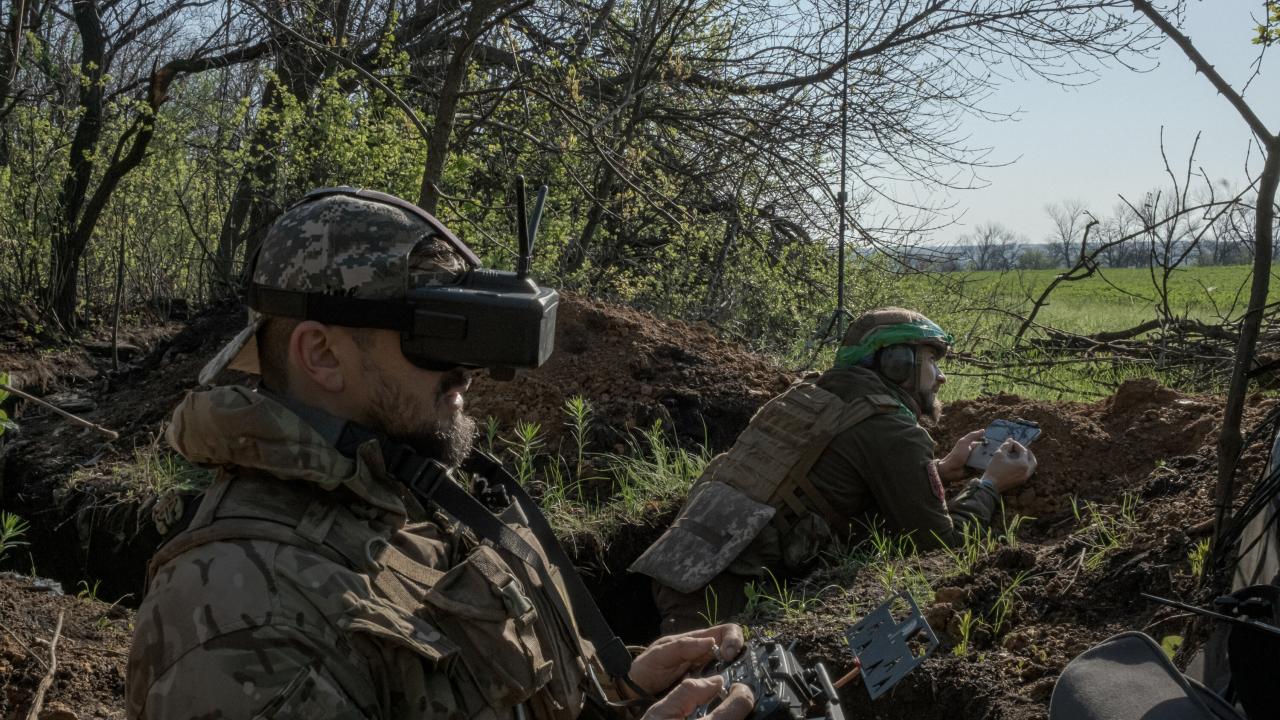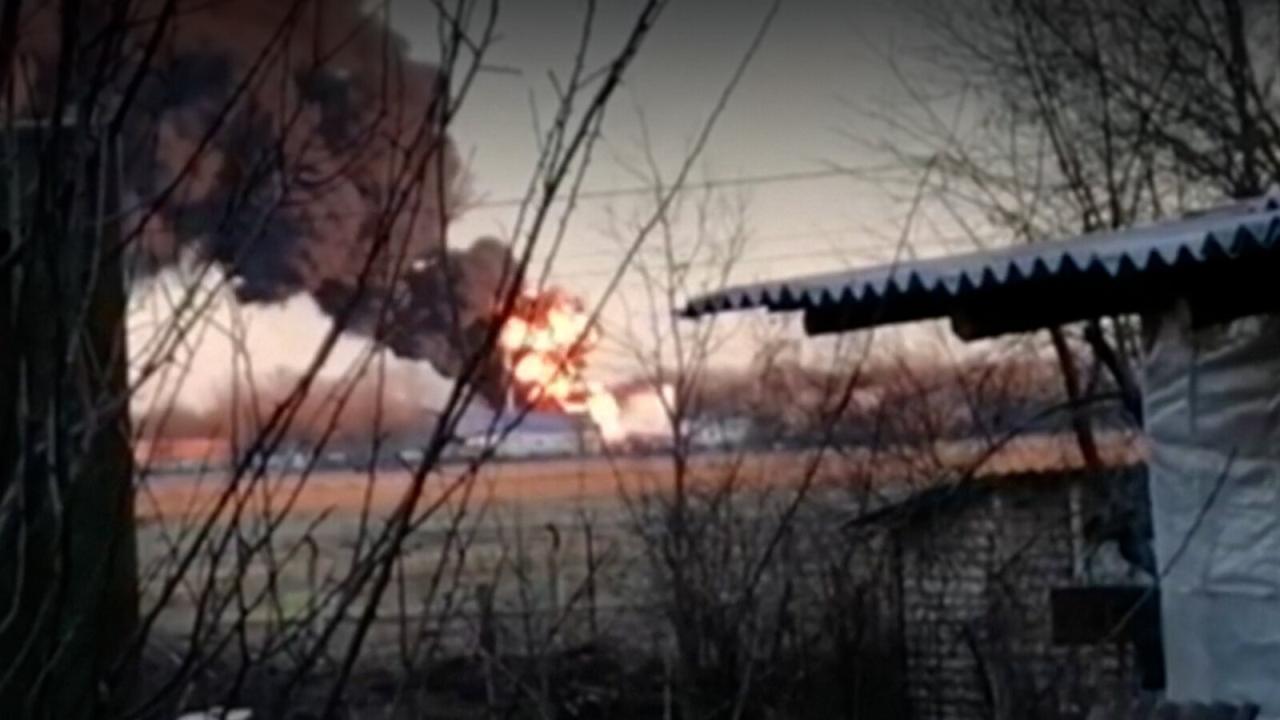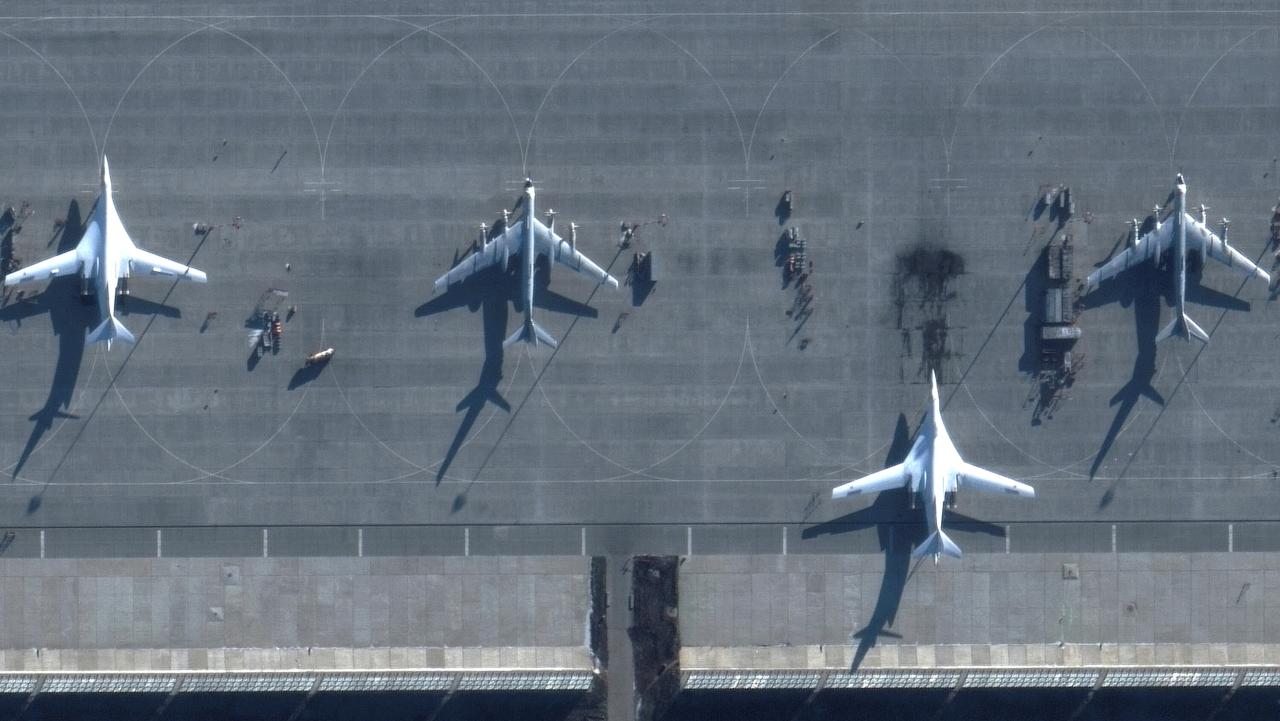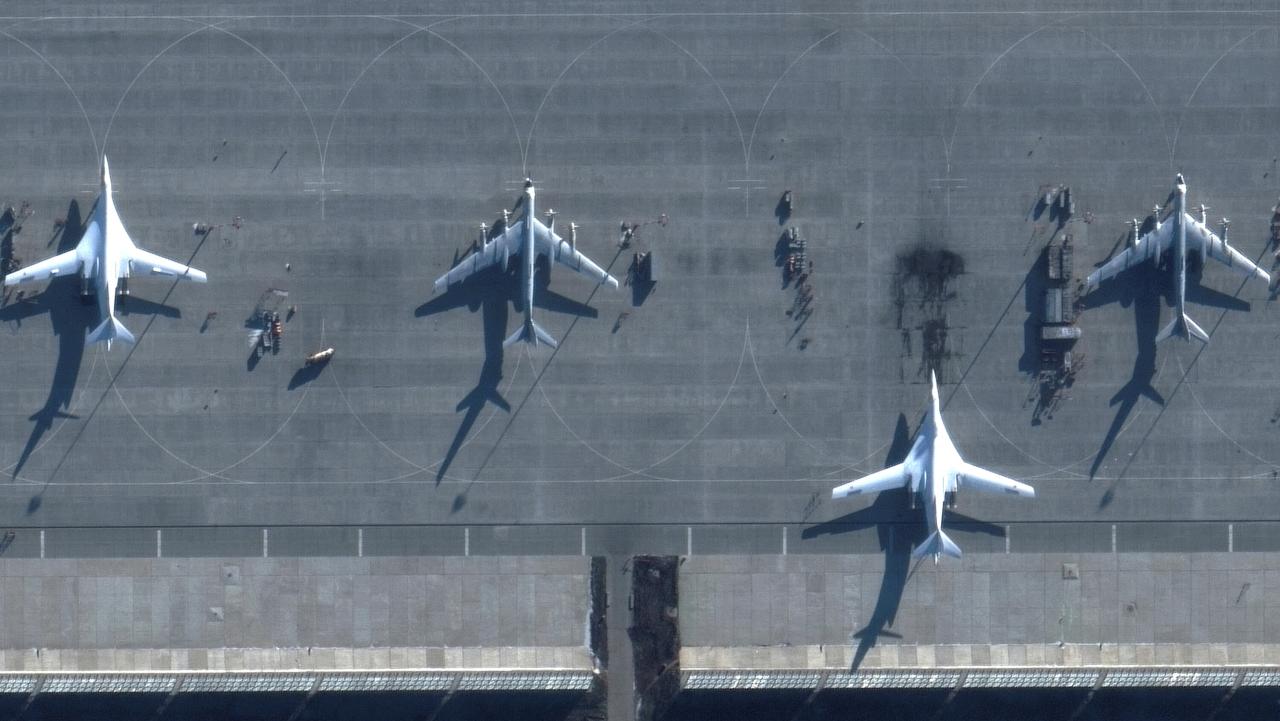Ukraine drone attack on russia – Ukraine drone attacks on Russia represent a significant escalation in the ongoing conflict. These attacks, varying in frequency and target, highlight the evolving technological and strategic dimensions of the war. Understanding the types of drones employed, the targets selected, and the responses elicited, both domestically and internationally, is crucial to comprehending the broader implications of this new phase of the conflict.
This analysis will delve into the geographical scope and frequency of these attacks, examining the technological capabilities of the drones used and the strategic rationale behind targeting specific locations. We will also explore Russia’s countermeasures, the international community’s reactions, and the impact on civilian populations, providing a comprehensive overview of this critical aspect of the Russo-Ukrainian War.
Ukraine Drone Attacks on Russia
The increasing frequency of Ukrainian drone attacks on Russian territory represents a significant escalation in the ongoing conflict. These attacks, while varying in scale and target, have raised critical questions regarding their geographic scope, the types of drones involved, the strategic implications of their targets, the attribution of responsibility, Russia’s countermeasures, and the broader international ramifications. This analysis explores these key aspects of the ongoing drone warfare.
Geographic Scope and Frequency of Drone Attacks
Drone attacks against Russia have targeted a wide range of locations, spanning several federal districts. A comprehensive map illustrating these attacks would show a concentration in regions bordering Ukraine, such as Belgorod, Bryansk, and Kursk oblasts, with decreasing frequency further into Russian territory. The map legend would utilize a color-coded system to represent attack frequency per location, with darker shades indicating more frequent attacks.
For instance, a dark red might signify over 10 attacks, while light yellow might represent 1-2 attacks. Data points would be plotted using latitude and longitude coordinates of reported attack sites.
A table comparing the frequency of attacks over time, perhaps organized quarterly, would show an initial increase in frequency following the beginning of the large-scale counteroffensive, followed by fluctuations based on various factors such as weather, Ukrainian capabilities, and Russian countermeasures. The table would include columns for the time period (quarter), the number of reported attacks, and potentially a column for the average distance of attacks from the Ukrainian border.
Analysis would reveal a clear trend of geographically focused attacks, with regions closer to the border experiencing a higher frequency.
Recent drone attacks on Russia by Ukraine highlight the increasing use of unmanned aerial vehicles in modern warfare. The incidents raise questions about safety protocols and potential civilian casualties, much like the concerns surrounding a recent florida drone accident which underscored the need for responsible drone operation regardless of intent. Ultimately, both situations emphasize the importance of robust safety regulations and operator training to mitigate risks associated with drone technology.
The geographic distribution reveals a clear pattern: Southern and Western regions of Russia, particularly those near the Ukrainian border, are disproportionately targeted. This suggests a strategic focus on disrupting logistics, military movements, and potentially impacting public morale in border regions. The regions most frequently targeted are those with key infrastructure or military assets, as proximity to Ukraine facilitates launch and retreat.
Types of Drones Used in Attacks

| Drone Model | Manufacturer (if known) | Range (km) | Payload Capacity (kg) | Typical Flight Duration (hours) |
|---|---|---|---|---|
| Example Drone 1 | Unknown/Modified Commercial | 50-100 | 5-10 | 2-4 |
| Example Drone 2 | Bayraktar TB2 (Possible) | 150+ | 50+ | 6+ |
| Example Drone 3 | Unknown/Locally Manufactured | 20-50 | 2-5 | 1-2 |
The effectiveness of different drone types varies greatly. Smaller, commercially modified drones are easier to deploy in large numbers but may have limited payload capacity and range. Larger drones, if used, offer increased payload and range, allowing for more substantial damage, but are more vulnerable to detection and interception. The table above provides a generalized overview, as precise specifications of drones used are often unavailable for security reasons.
Technological advancements in the drones employed in these attacks include improved range, payload capacity, navigation systems (potentially utilizing GPS jamming countermeasures), and the integration of more sophisticated targeting systems. The development of swarm tactics, coordinating multiple drones for simultaneous attacks, represents a notable technological shift.
Targets of Drone Attacks

A bar chart illustrating the percentage of attacks targeting different categories would show a significant portion directed at military installations (air bases, fuel depots, etc.), followed by infrastructure (power grids, transportation hubs, etc.). Attacks on purely civilian targets are, from publicly available information, less frequent, although damage to civilian infrastructure from attacks targeting military facilities is reported. The chart would clearly demonstrate the strategic nature of the targeting, aiming primarily at military and logistical capabilities.
The strategic implications of targeting specific locations vary. Attacks on military installations aim to degrade Russia’s military capabilities, while strikes on infrastructure aim to disrupt logistics and essential services. Targeting specific high-value assets may also have a significant psychological impact.
| Target Category | Type of Damage |
|---|---|
| Military Installations | Destruction of equipment, infrastructure damage, casualties |
| Civilian Infrastructure | Power outages, transportation disruptions, property damage |
| Other | Minor damage, limited impact |
Claimed Responsibility and Attribution
While definitive attribution is often challenging, some attacks have been claimed by Ukrainian officials or affiliated groups. Methods for claiming responsibility range from public statements to social media posts showing footage of the attacks. The evidence used for attribution often involves analysis of drone wreckage, flight paths (if available), and publicly available statements.
Attribution methodologies often rely on open-source intelligence (OSINT), including analyzing videos and images from social media and comparing them to known drone models and flight characteristics. Geolocation of videos and images also plays a crucial role in verifying the location of attacks. However, the lack of transparency and the potential for misinformation make definitive attribution complex and often subject to debate.
Russia’s Response to Drone Attacks

Russia has implemented a variety of measures to counter drone attacks. These include:
- Deployment of air defense systems
- Electronic warfare measures to jam drone signals
- Increased border security
- Development of anti-drone technologies
- Public information campaigns to counter the psychological impact of the attacks
The effectiveness of Russia’s countermeasures is debated. While some attacks have been intercepted, others have successfully reached their targets, suggesting that the current measures are not entirely effective in preventing all attacks. Russia’s public statements following drone attacks often involve accusations against Ukraine and claims of minimal damage.
Russia’s official statements typically downplay the impact of the attacks, often highlighting successful interceptions and emphasizing the resilience of its defense systems. However, independent assessments suggest that the attacks have had a degree of success in causing disruption and damage.
International Reaction and Implications
The international community’s response to the drone attacks has been varied. Some countries have expressed concerns about the escalation of the conflict and the potential for civilian casualties, while others have remained largely silent. The geopolitical implications are significant, as the attacks demonstrate the potential for asymmetric warfare to challenge traditional military power. The continued use of drones could further destabilize the region and potentially escalate the conflict.
| Country | Statement/Action |
|---|---|
| United States | Expresses concern, provides aid |
| European Union | Condemns attacks, sanctions Russia |
| Russia | Accuses Ukraine, denies significant impact |
| Other Countries | Varying levels of concern and response |
Impact on Civilian Population, Ukraine drone attack on russia
While the primary targets are military and infrastructure, drone attacks have occasionally resulted in unintended consequences for civilians. Reports indicate instances of damage to civilian infrastructure near targeted military sites, leading to property damage and potential injuries. The humanitarian consequences are significant, as these attacks can displace populations, disrupt essential services, and generate fear and uncertainty among civilians in border regions.
Accounts of damage to civilian infrastructure include instances of damaged homes and businesses due to explosions or falling debris. Casualties, while seemingly limited in comparison to conventional warfare, have been reported, emphasizing the potential for collateral damage and the need for precise targeting.
Recent drone attacks on Russia by Ukraine highlight the evolving nature of warfare, showcasing the increasing sophistication and range of unmanned aerial vehicles. This technology’s potential is vast, as evidenced by the impressive displays seen at events like the orlando drone show , which showcase both civilian and potentially military applications. Ultimately, the advancements in drone technology, whether for entertainment or conflict, are rapidly reshaping global dynamics and the future of warfare.
The persistent use of drones in the conflict between Ukraine and Russia underscores the evolving nature of modern warfare and its profound geopolitical implications. The frequency, sophistication, and strategic targeting of these attacks signal a significant shift in the dynamics of the conflict, demanding close observation and analysis. The international community’s response, along with Russia’s countermeasures, will ultimately shape the future trajectory of this conflict and its broader impact on regional stability.
Commonly Asked Questions: Ukraine Drone Attack On Russia
What is the primary goal of Ukrainian drone attacks on Russia?
Recent drone attacks on Russian territory by Ukraine have raised significant geopolitical tensions. The sheer scale of these operations contrasts sharply with the seemingly simpler task of tracking Santa Claus, for which you can find the norad santa tracker phone number. However, both events highlight the increasing reliance on technology and sophisticated tracking systems in vastly different contexts, underscoring the complexities of modern global affairs.
The Ukrainian drone attacks continue to be a major focus of international attention.
The primary goals are likely to disrupt Russian military operations, damage critical infrastructure, and demonstrate Ukraine’s capacity to strike deep into Russian territory.
How does Russia respond to these attacks?
Russia employs various countermeasures, including electronic warfare, air defenses, and increased security measures around potential targets.
What international laws are relevant to these drone attacks?
The legality of these attacks is complex and debated, with international humanitarian law and the laws of armed conflict playing a central role.
What is the long-term impact of these drone attacks expected to be?
The long-term impact is uncertain but could include escalating tensions, further military developments, and changes in the international geopolitical landscape.
